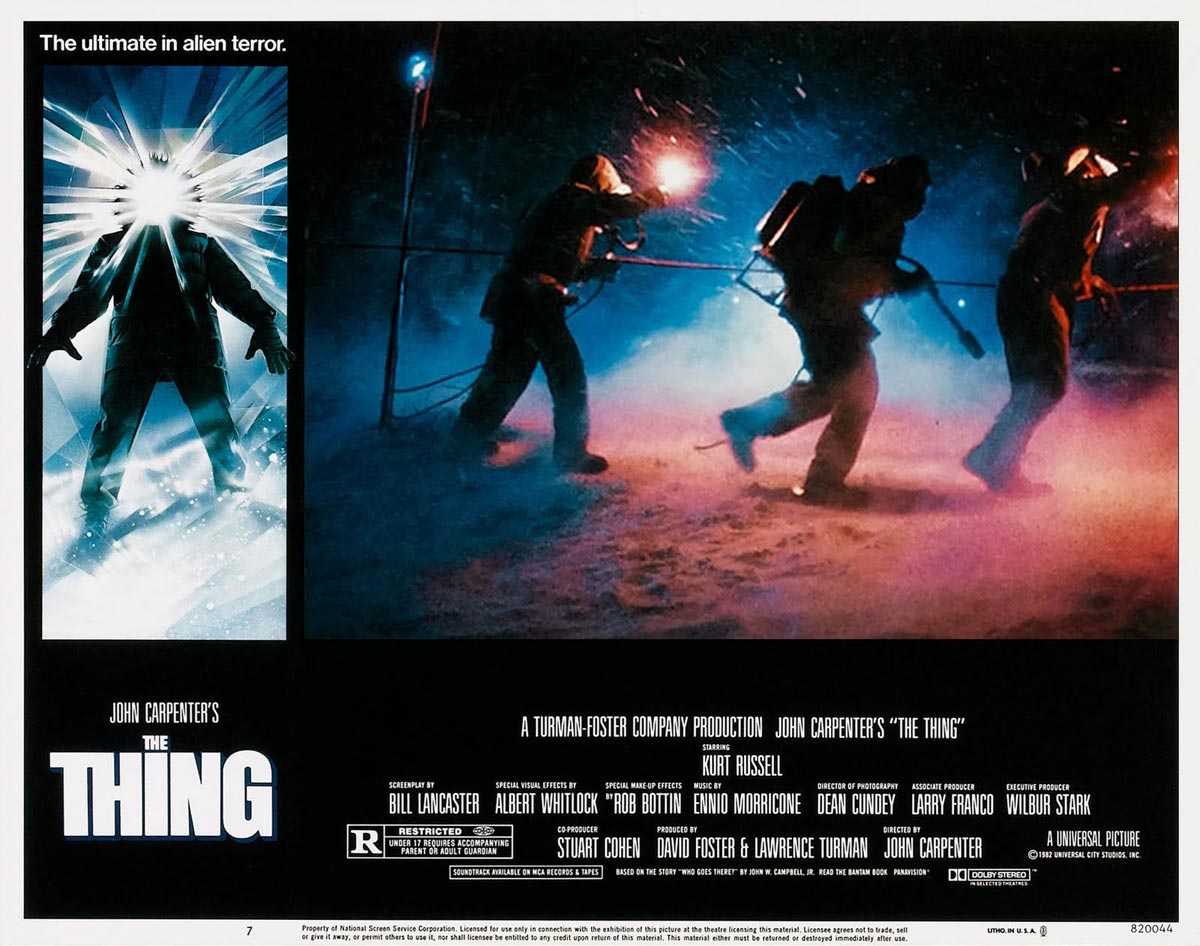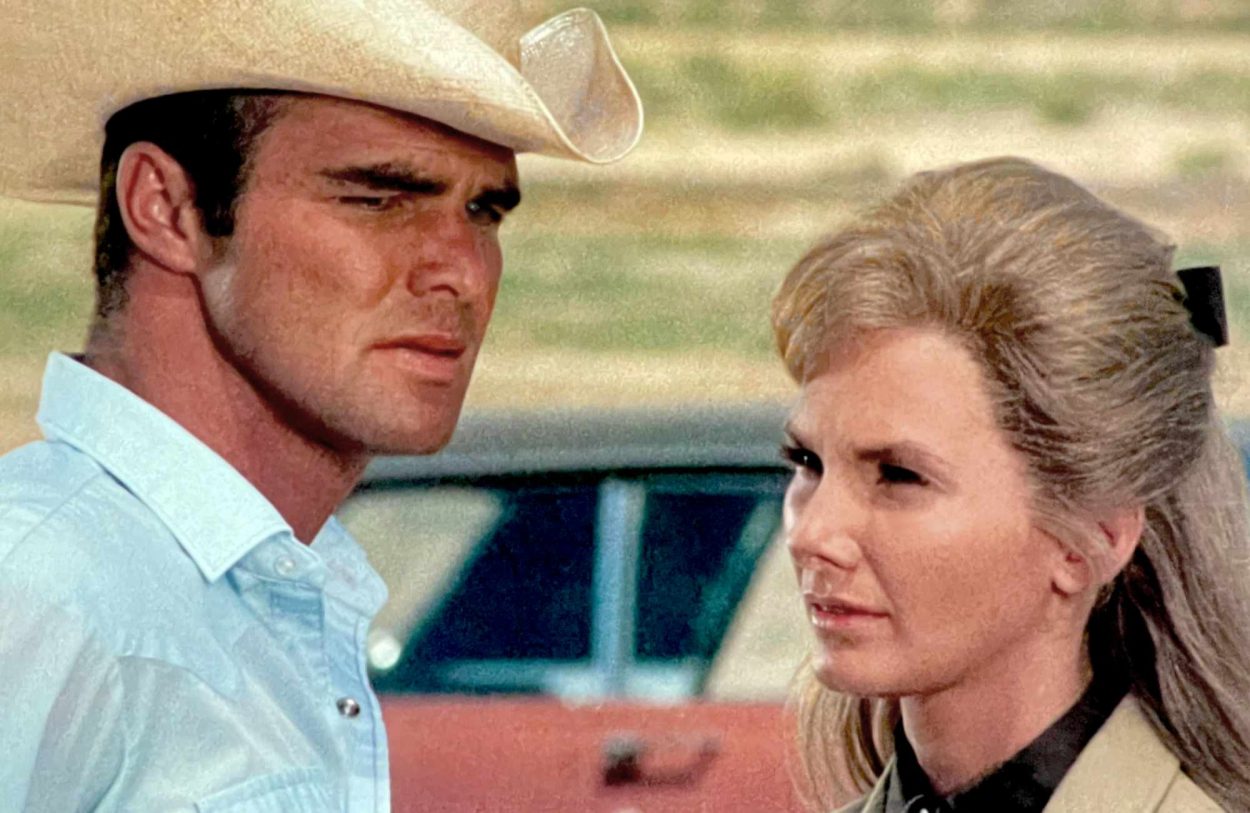After small budget films Dark Star (1974), Assault on Precinct 13 (1976), Halloween (1978), The Fog (1980) and Escape from New York (1981) produced huge box office returns compared to their budgetary constraints, the multi-talented director John Carpenter with his ability to write, score and edit his own films, was about to become a “made-man” in the studio system – helming a 15 million dollar budget for Universal’s The Thing (a remake of Howard Hawks and Christian Nyby’s The Thing from Another World although it would end up being more faithful to the source material – John W. Campbell, Jr.’s novella – Who Goes There?).
For Carpenter, this was a golden opportunity to apply his magic touch at the onset of a decade that Hollywood would shower money on big blockbuster films and sequels, thus positioning himself to sit at the top of the mountain with the A-list actors and projects. Carpenter was a low risk commodity for Universal Studios, having already put together a virtual “How to” playbook on shoestring filmmaking – creating tension with sound design, hair raising film scores, haunting lighting, and inventive camera set-ups that could make operatic storytelling in a location like the police station in Assault on Precinct 13, or the house where Jamie Lee Curtis babysat in Halloween. All the future iconic director had to do was make a movie that put butts in the seats, something he had consistently done since his USC student film on steroids Dark Star (with Dan O’Bannon) ended up with theatrical distribution. Instead, John Carpenter made an enduring masterpiece that critics beat up like a three-headed Alaskan Malamute dog piñata, and audiences ignored.
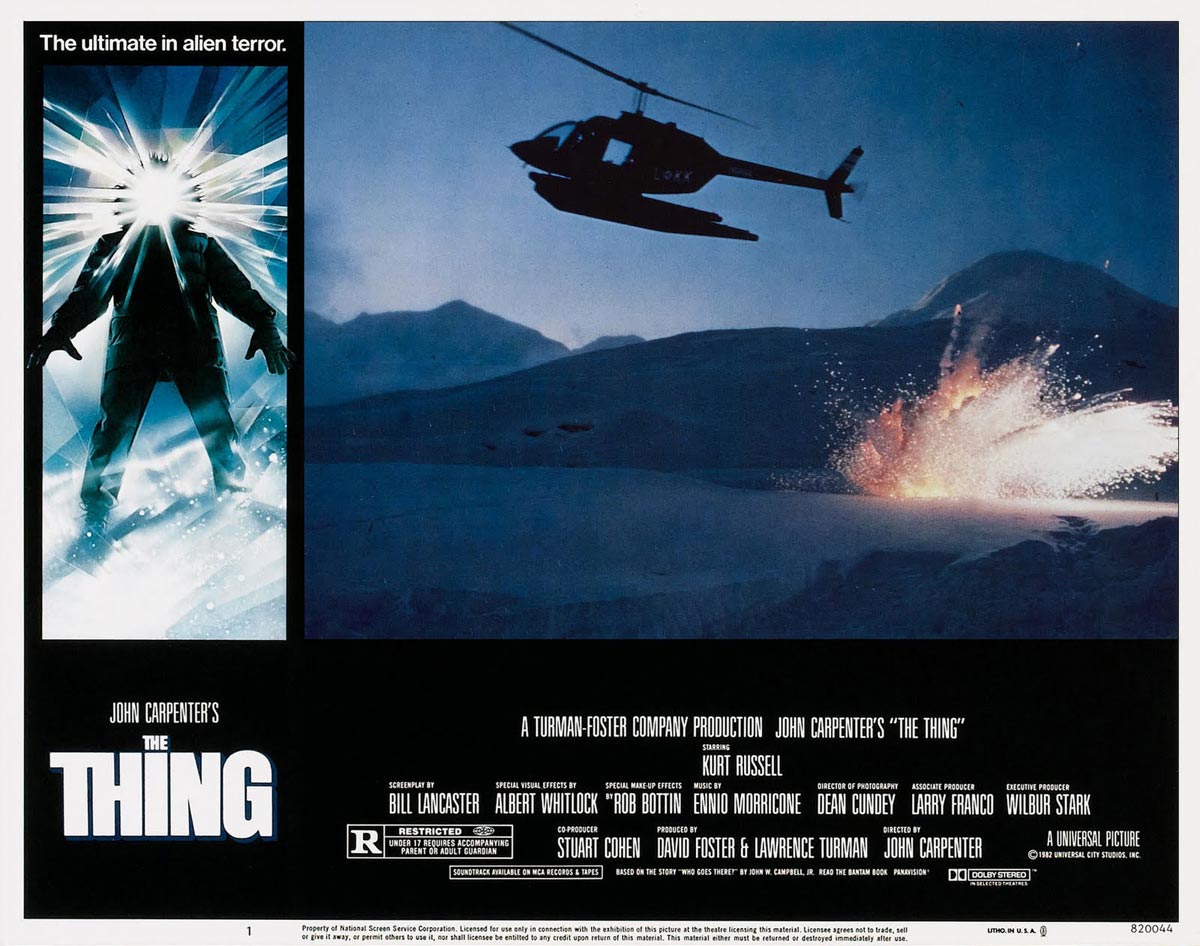
Released 35 years ago this past June, The Thing, not unlike the alien shape-shifting organism that decimates the Norwegian and American crews stationed in the Arctic, has evolved into something formidable that was too powerful to kill with horrible reviews and box office disappointment. When the icy reviews thawed out, however, Carpenter’s career – like the film’s reluctant hero R.J. MacReady – was now in survival mode with Universal pulling the Stephen King Firestarter project that had been previously offered to Carpenter. The “Master of Horror” would bounce back with a different King adaption – Christine – a film that experienced modest box office success, but according to Carpenter was the only film offered to him after the hangover of his misunderstood remake. Carpenter’s filmography is both legendary and influential, but there remains a sense of cinematic injustice that the $100 million-dollar block-busters his contemporaries like Spielberg, Lucas, DePalma, Cameron, Zemeckis, and Levinson enjoyed during the Reagan era had eluded him.
I had an opportunity to sit down with New York based actor and acting instructor Thomas G. Waites who plays “Windows” in The Thing, to discuss what it was like working on the film that was considered John Carpenter’s “shot” at the big time, what it’s like being associated with a classic film, and how the director stayed true to his nihilistic vision of isolation and paranoia that has influenced such filmmakers as Quentin Tarantino, Guillermo del Toro, Edgar Wright, James Cameron, and the Duffer Brothers to name but a few.
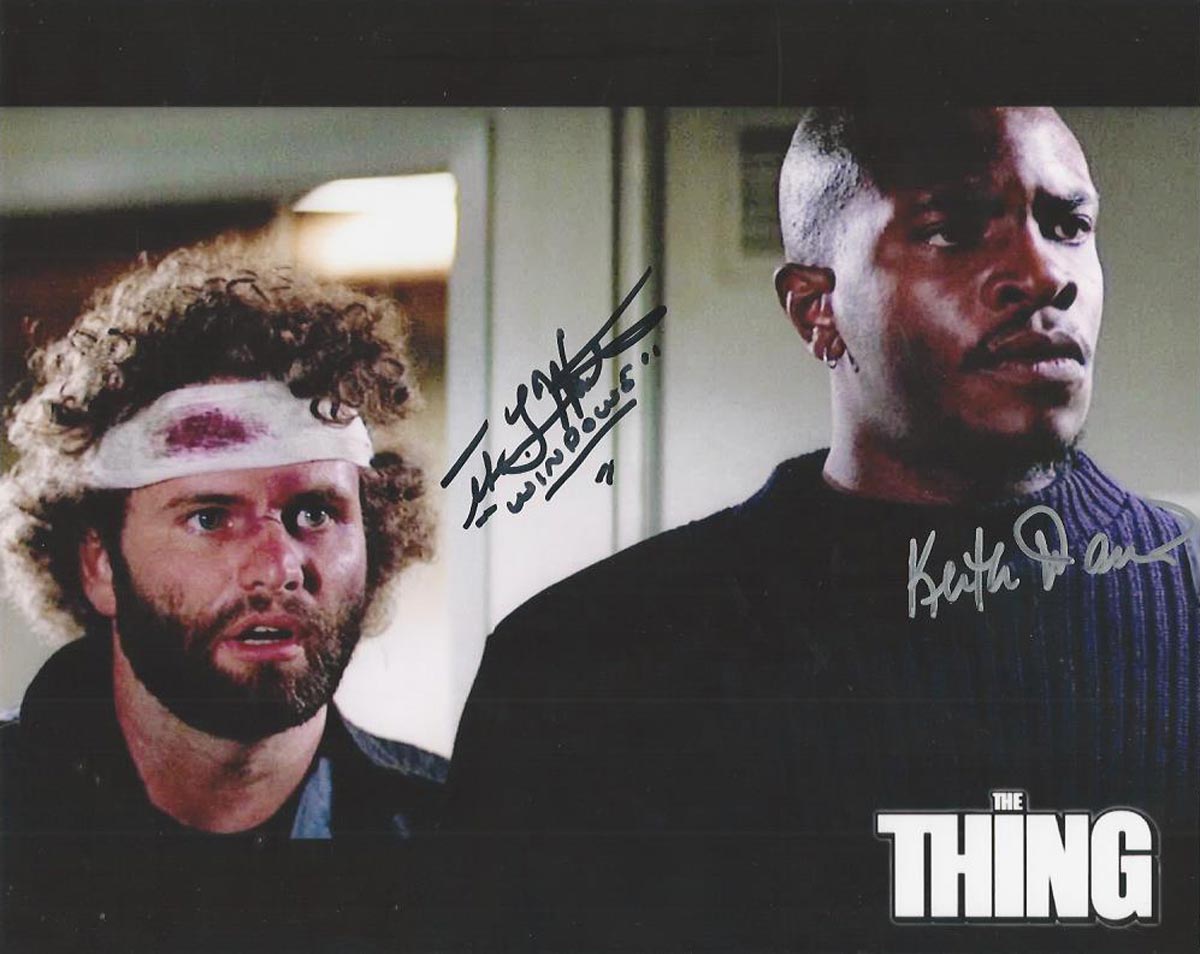
GM: This past summer marked the 35th anniversary since The Thing was released, and is widely recognized as John Carpenter’s masterpiece. Can you recall what it was like working with the “Master of Horror”?
TW: I can remember it vividly. I can close my eyes and I’m right back there on the Universal lot. I was doing a play with Al Pacino. The great Al Pacino, and John and Kurt came to see it and John asked me to come in and read for him and offered me the part. I know he’s considered the master of horror, but he was just a really fine director. He was interested in his actors, created an atmosphere of fun and frivolity, and pushed us to use our imaginations. We rehearsed for two weeks, then he brought us into a room – individually – and asked us questions about the film. “What do you think?” “How do you feel?” I felt like I had arrived. John Carpenter wanted to know what I thought about the film?! The film was like working on Chekov, in that we really explored what was happening in the scenes. There was a lot of discussion. I mean, it’s not a play for God’s sake, but we’d read the scene and explore it. He even let me change my name to “Windows” when I told him I wanted to wear sunglasses to hide behind the isolation my character felt for ending up in the Arctic when all he really wanted to be was a movie star (laughs), which was my take on him. I’ve always thought a good director is inherently a good person, and John’s a good person.
GM: Coming off playing Bobby in American Buffalo with Al Pacino, you had a run starting in 1978 with: On the Yard, The Warriors, …and justice for all, and The Thing. You must’ve thought, “Well, shit, this working actor gig is easy.” Can you look back now and appreciate how rare that kind of early success was?
TW: It was a really weird time. There was a joke going around among actors that if Waites shows up he’s going to get the part. And it seemed like that for me – everything I was going in for – I got the part. I was very fortunate. I tried to use the early success as wisely as I could, and of course if I could go back to that time there would be things I would’ve done differently, but of all the actors out there, and a lot of good ones, I got to be in two cult films. I feel really fortunate about that.
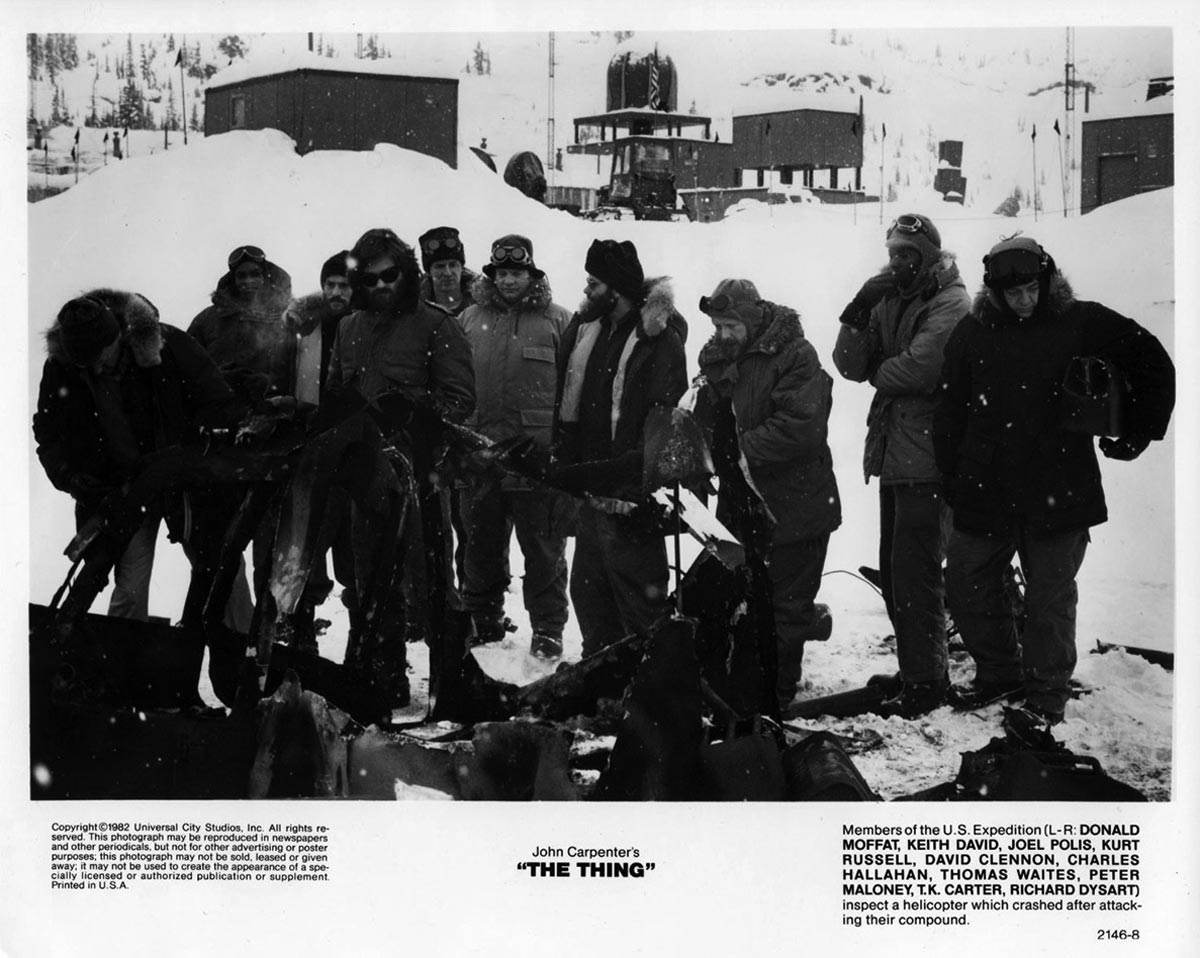
GM: The acting and film world recently lost John Heard, and I know the two of you were friends. I’ve heard you mention how much you learned from John working with him in On the Yard, which was a tough, gritty shoot. Can you talk about how John Heard helped you prepare for The Thing?
TW: Listen, anybody who knew John, knew what a magical person he was. Talk about a run? Forget what I did, John was the golden boy of the late seventies and into the eighties. He played Cassio in Othello with Raul Julia and he was amazing. He stole the show. That’s how he got that great movie with Jeff Bridges… refresh my memory…
GM: Cutter’s Way
TW: Right. It was initially called Cutter’s Bone. The director went to Othello to see Richard Dryfuss I believe, a great actor in his own right, and left casting John Heard. He was a complexly intelligent man, and he wouldn’t consider himself a teacher, but he studied and observed behavior like a scientist. He would watch the shooting during On the Yard and he knew, “There’s a guy who doesn’t know what the fuck he’s doing” – meaning me – “and I’ve got to go help him.” So, he took me out for a drink and he said let’s work on the script. He would come to the set when he wasn’t called to watch me and give me notes – “Just remember, in film acting the audience is your camera. Camera is your audience. Be aware of that lens at all times.” There were so many talented and experienced actors in The Thing, having worked with John [Heard] prior to that was invaluable to me.
GM: The third act of The Thing plays out like a whodunit in a sarcophagus, with its long Titanic like corridors that take on fire instead of water. Did it feel like being back in the theater with the actors performing in such claustrophobic set pieces? A kind of “12 Terrified Men” so to speak.
TW: That’s interesting, I’ve never really thought of it like that, but it certainly has that quality. Like any organization it all stems from the top, and John Carpenter assembled a terrific cast. That’s one of the keys to The Thing. Kurt Russell is a highly underrated actor in my opinion. I think it’s because he’s a movie star, so it’s easy to take for granted what he does. Robert Downey Jr. is like that, too. But people need to appreciate that Kurt Russell is just in another class. He’s given so many great performances – too many to mention, but in Hateful Eight for example, when he looks at the Lincoln letter, you saw Abraham Lincoln. And Joel Polis, a guy who isn’t mentioned very much but is also a fantastic talent. Keith David… Richard Dysart… he couldn’t speak a syllable that would be untrue. Charlie Hallahan. Charlie told me one day, “I gotta turn down work, because I can’t afford the taxes.” Charlie was the sweetest, kindest, most talented man you could hope to meet in your lifetime. And Wilford Brimley, the great Wilford Brimley. C’mon. Everyone in the film believed in and bought into what John was doing. These weren’t just good actors they were good men.
GM: That really comes through onscreen. The cast has a kind of collective integrity and camaraderie that is challenged and overwhelmed by paranoia as they try and piece together just what in fact, or who in fact, is happening to them.
TW: And John had integrity. He stuck to his guns. Audiences aren’t stupid. They figure things out pretty quickly – whether or not a film is any good – which is why the film has endured these many years. It took incredible guts to make a studio film at that time without a woman in the cast. It was unheard of. Critics? I don’t know. The Thing got terrible reviews, and pretty unfairly. It was devastating to John, I think.
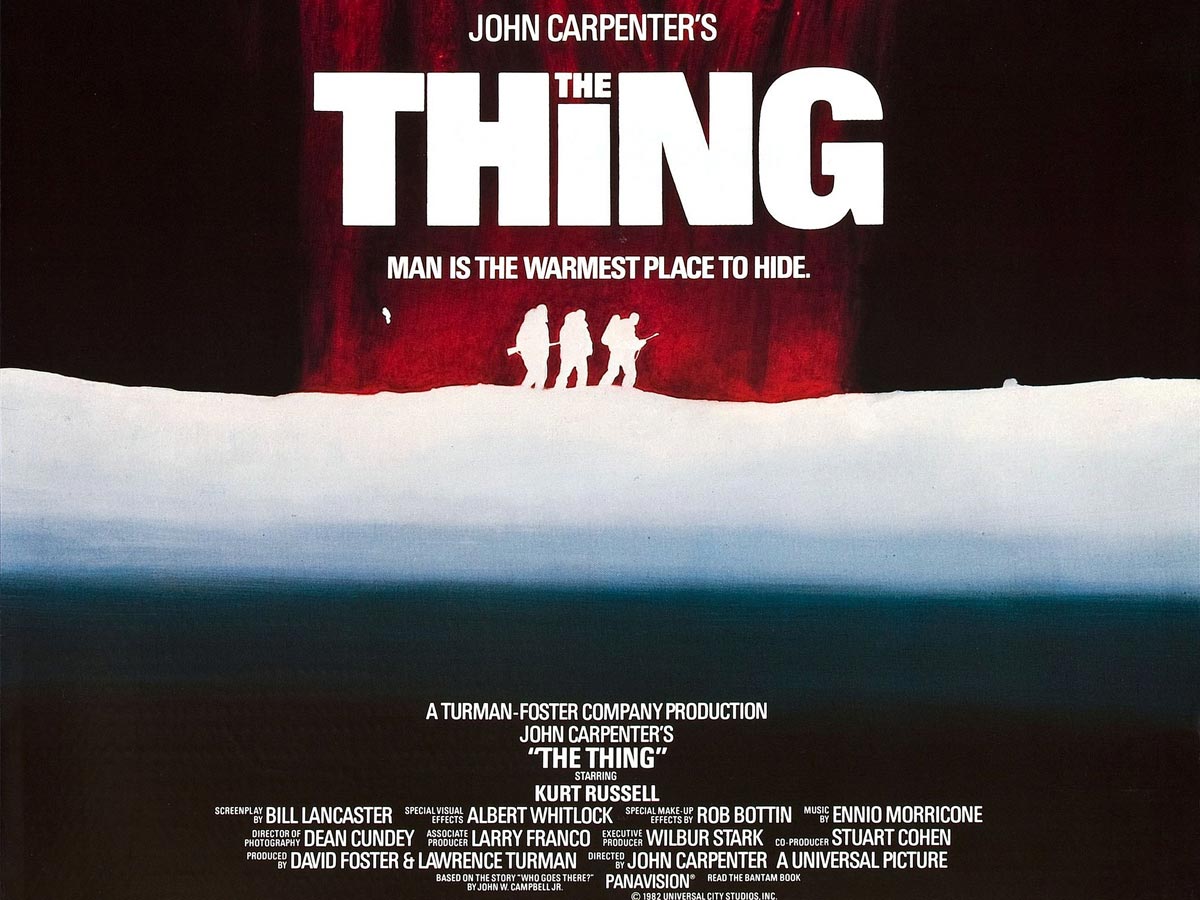
GM: The Thing is kind of the anti-Jaws, in that Carpenter embraced showing the monster. That was pretty bold since he ran the risk of making a bad drive-in B-movie if the effects fell flat. Rob Bottin the head of the film’s special effects department ended up in the hospital at the end of the shoot from exhaustion, and a bleeding ulcer at the tender age of 23. Did the cast feel the same pressure as Bottin?
TW: I’ve been told, perhaps in the biography that’s out there about John, that he lost so many opportunities because of the critical failure of the film. Thing was considered his shot so to speak, so imagine the duress and stress that he was under. Look, big studio films are big studio films, whether it’s 1982 or 2017, and the pressure to helm a film is not unlike what an NFL coach experiences. Directors are under the gun, and the responsibility is the likes of which very few people will get to take on. He was hounded about the money on the effects, he was pressured to shoot the alternate ending…
GM: Carpenter never even screened that for an audience, apparently.
TW: Well, that’s John. That wasn’t his ending. But poor Rob [Bottin] was certainly feeling the heat. John kept that away from the actors, though. I’ve had more pressure from Broadway producers – “There’s a reviewer here. You better be great, or we’re going to have to close!” John dealt with the studio separately, but it sure took a toll on young Rob. The pressure John was under and the expense of the effects were mounting, and the studio was breathing down his neck. That I do remember. But again, he didn’t put that back on the cast.
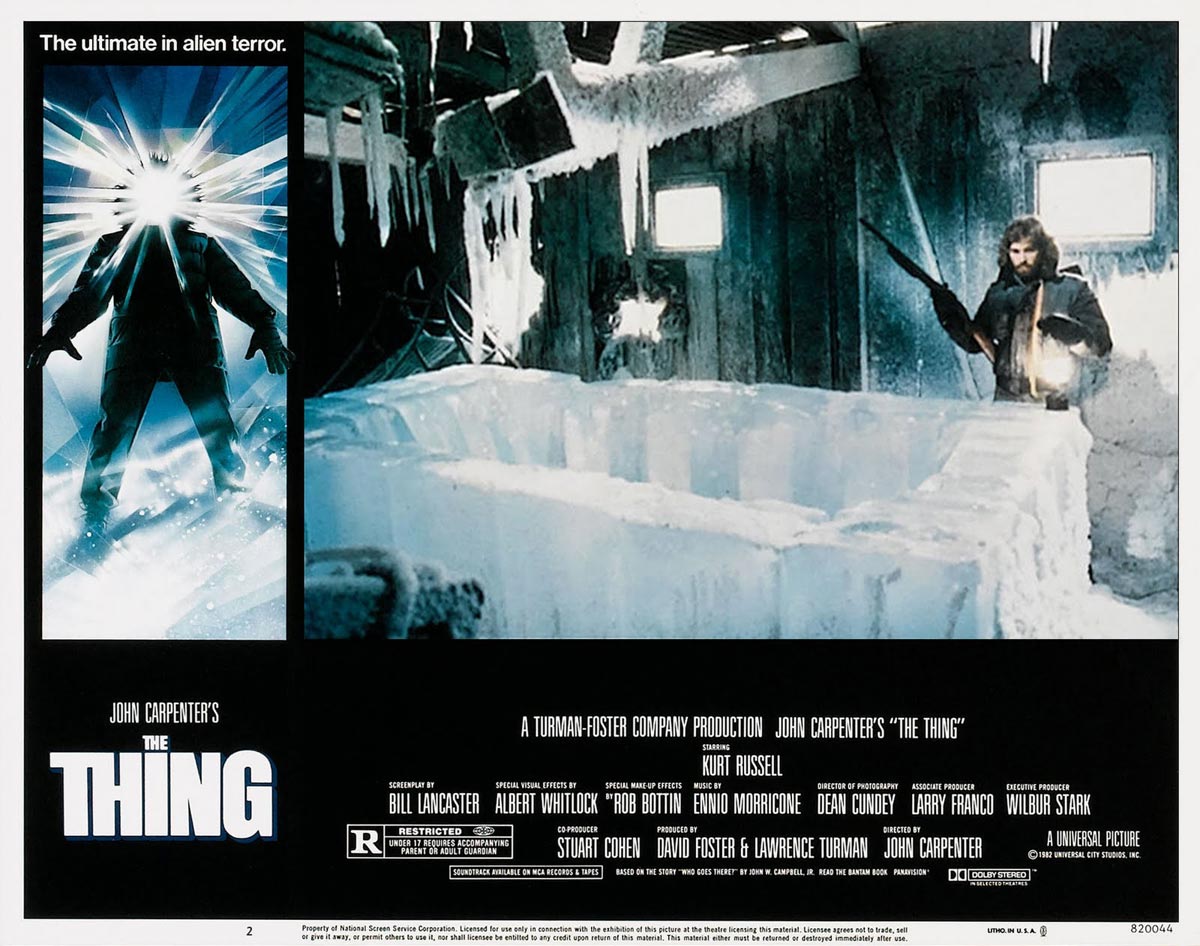
GM: The Thing came out two weeks after E.T. phoned home the big box office bucks, and in 1982 audiences and critics wanted their alien to be a boy and his dog, instead of a life draining, shapeshifting organism. Is there vindication that The Thing has become so revered by audiences and continues to influence filmmakers?
TW: Yes. But that didn’t help John in 1982. Look, John went on to make so many great movies – Star Man with Jeff Bridges is one of my favorite films ever. But there’s no question that he would’ve had a shot at the big budget action films of the 80’s had The Thing been the success it is now, 35 years ago. It’s a brutal industry. I don’t think The Hateful Eight got the recognition it deserved, at least on the level that I appreciated it. I saw it with my daughter when it came out and we were floored by it. It’s overwhelming on the big screen. I had tears. Being in this business is a lot like going to Las Vegas for a living. You take a gamble, a high-risk gamble, and sometimes it pays off – but a lot of times it doesn’t – and you have to live with the consequences. Van Gogh sold one painting for fifty bucks to his brother and suffered from malnutrition. Art is not fair.
GM: The Thing is a master class in reaction shots. Your “Holy shit” slow turn is mesmerizing when you discover Bennings. Were you being told what you were going to see, or were the effects in place?
TW: No. We were told what we were going to see. I think that came from having two weeks of rehearsal. Peter Maloney [Bennings] another great actor, actor’s studio guy, and a good friend of mine. Terrific actor. Somewhere in rehearsal he put himself in a grotesque position to demonstrate what would be happening to him. I caught the film recently on television, AMC Horror Classics I think, so I got to revisit it. On T.V. The Thing is good, but on the big screen it’s phenomenal. Great camera work by Dean Cundey. Those effects are made for a theater.
GM: The Thing is the only film that Quentin Tarantino screened for the The Hateful Eight cast up at his house…
TW: I’m honored to be a small part of that.
GM: But were you aware that Ennio Morricone resurrected some of his original musical pieces for Hateful Eight that were not used in The Thing?
TW: You gotta be kidding?! That is crazy. I never put the two together until you just told me this. The musical aspects, I mean. The films are so similar – the way the direness of their situation and the tension gets its hooks into you and pulls you in. The dialogue. The weather as a character.
GM: I’ve always felt there’s a lot of heroism in the nihilistic ending of Thing, with Kurt Russell and Keith David sharing the bottle of scotch, resigned to their fate. Does the film carry the same weight all these years later if the alternate MacReady rescue ending had been used?
TW: (emphatically) No! The film was so prescient because of the AIDS virus it really became a 1980’s metaphor for that disease and the paranoia Americans felt towards the gay community.
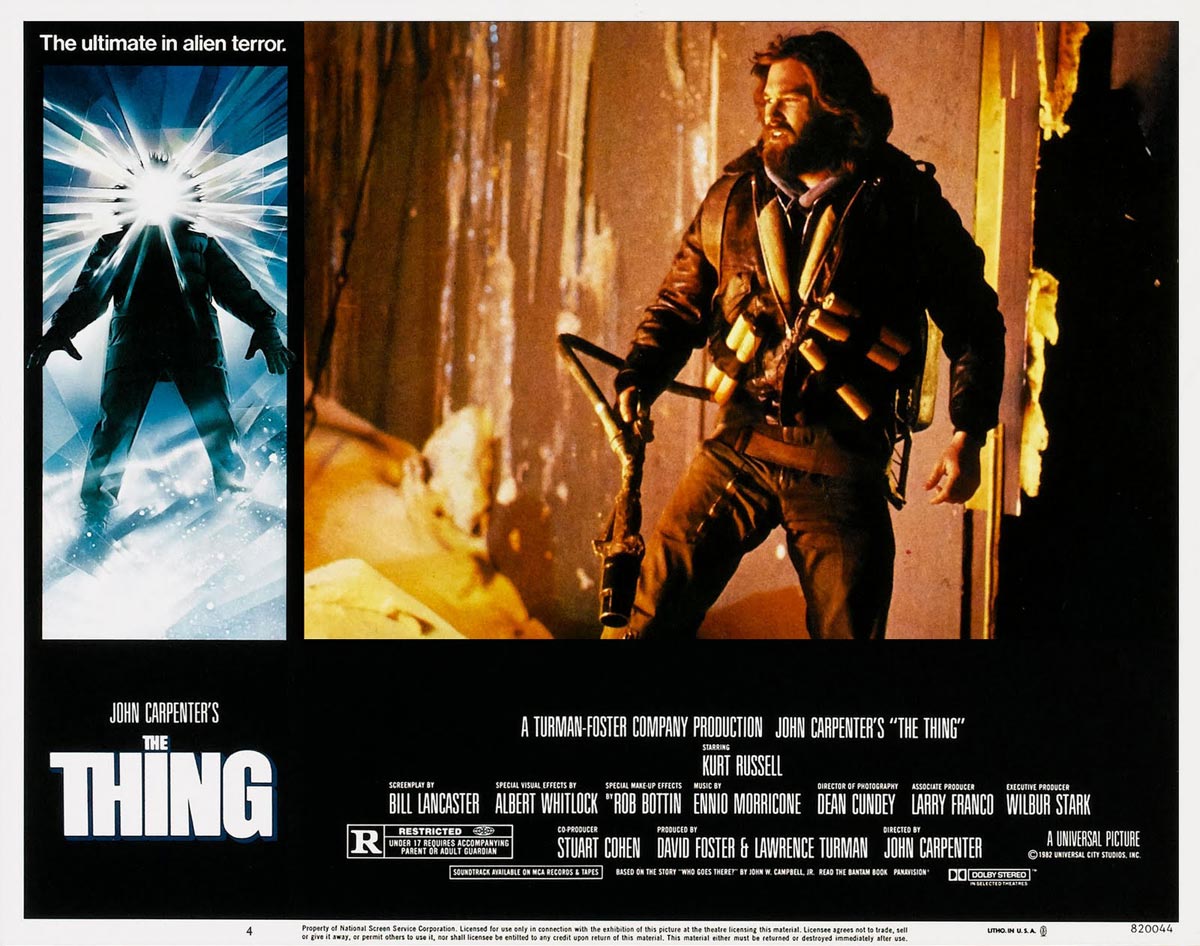
GM: Carpenter and Russell had made the Elvis television movie, and Escape From New York together, but Russell was only seven years removed from Disney’s The World’s Strongest Man and not yet an action star. What was it like working with Kurt?
TW: Kurt doesn’t make a big deal out of acting. He’s not a tortured soul. He’s one of the guys, part of a team, makes everyone feel important. Like Wil Brimley, he shows up – does the work – and goes home. He was schooled in the business from an early age and figured out how to say “No,” how to tame the industry and make it work for him, instead of him being broken by it. He taught me that you have to be strong within yourself and not let the industry determine your worth. Many years ago I was teaching an acting class in Los Angeles and his son Oliver was in my class, and one day Kurt dropped in to say “Hi,” and he ended up staying for the class, and wound up doing an improv on stage with some other actors – it was about baseball – and it was really good. Kurt was into it. But he was just one of the guys, and put everyone at ease and took the opportunity to do some acting. That’s Kurt. He’s authentic without an actor’s neediness for approval.
GM: You once told me a story that you were living in Central Park when you were offered the role of “Bobby” in American Buffalo with Pacino, and you actually held out for more money, because you needed your first and last month’s rent. I always thought that was an incredible lesson in knowing your self-worth. The New Beverly Cinema is frequented by a lot of talented artists that are soaking up inspiration. Do you have any words of advice for them?
TW: It was Washington Square Park and for a period I was sleeping there. I held out for $50 a week more. It was such a small amount of money for the production – $500 a week – and I said “I need $550.” They said, “Well, we’re going to give it to the next person,” so I said, “Go ahead.” And they came back with more money. I’ll say this: Work hard and good things come to you. The great man does what he cannot do. Whatever it is that you think you cannot do, that’s what will make you a more interesting person, actor, writer, director – whatever. If you think you can’t get a film made, then you have to make a film. Know your value. Believe in your self-worth. It’s never too late.
